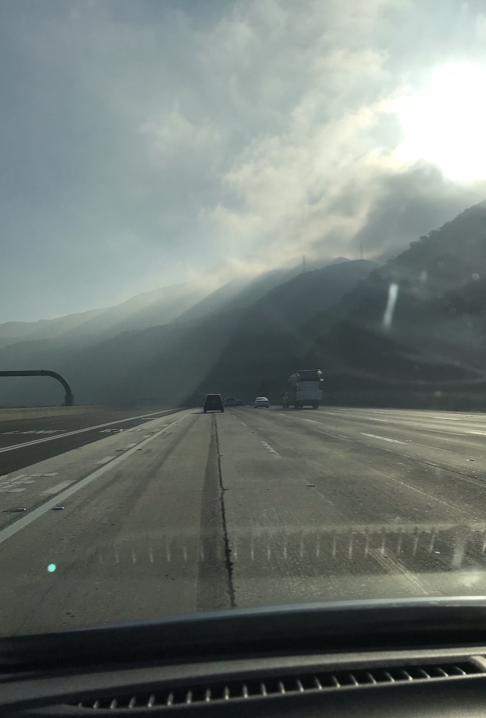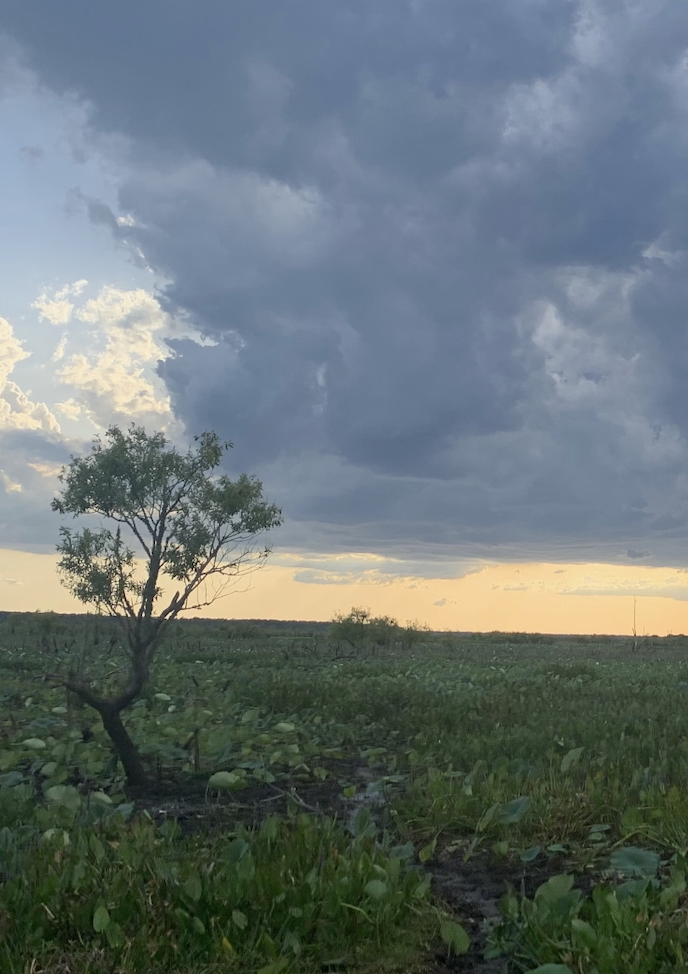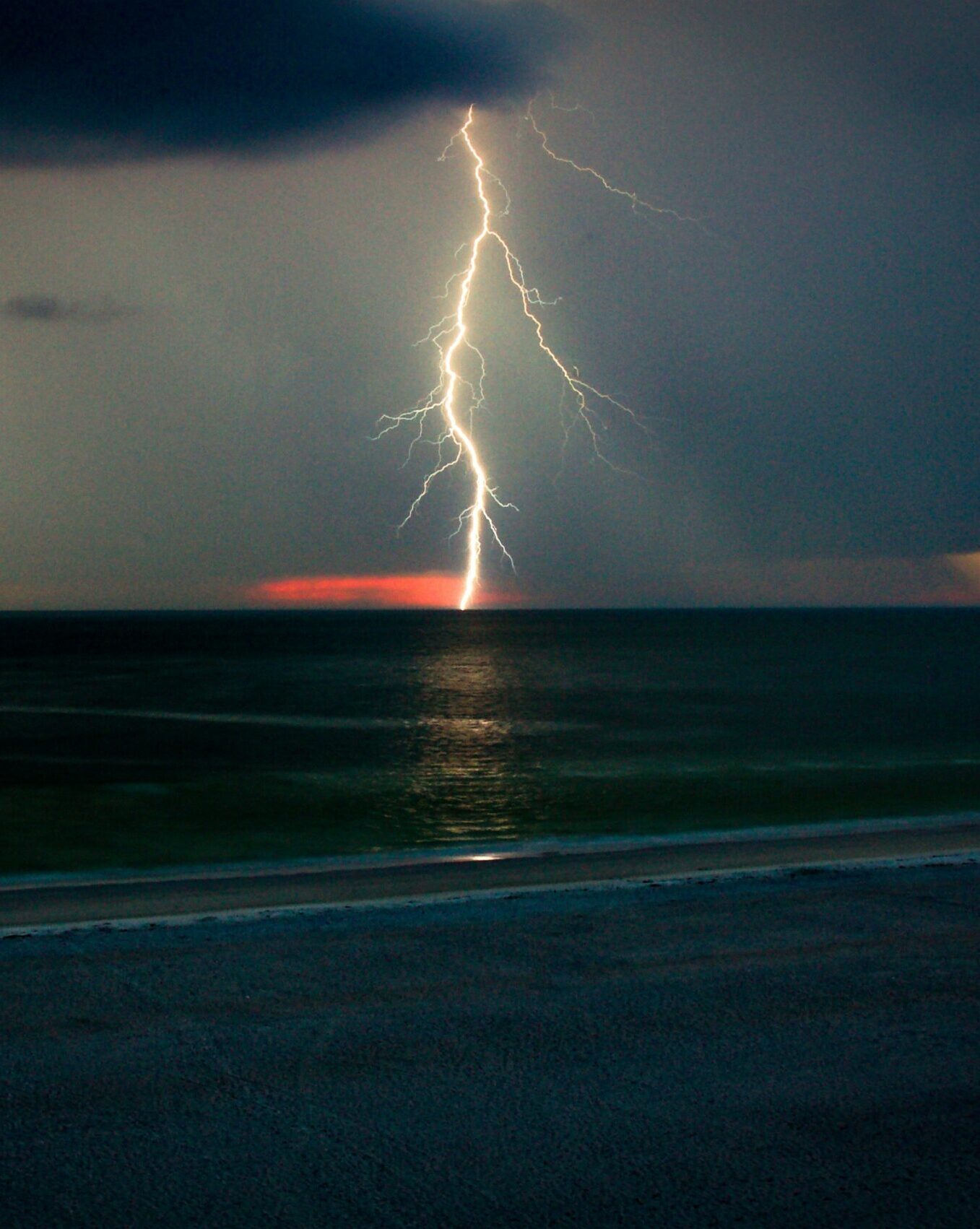
I-5, California
I’ve driven up and down California via the Interstate-5 freeway countless times. There are many ways to find a way through its veins, but I am mostly familiar with the drive between the San Francisco Bay Area and Los Angeles or San Diego. I’ve lived a lot of life in and between these three major cities in California, and even at age 36, I am still learning to appreciate the distance between NorCal and SoCal, as well as the static landscapes that I have spent hours gazing at intently.
Driving is the accumulation of, yes, hard work, time, and motivation. Also, it is freedom and privileges based on sacrifice—of time, energy, practice, class. and labor. Growing up, my mom was the main driver for our daily chores and transportation. On weekends, we’d go anywhere: Eastridge Mall to browse department stores with sales, Oak Hill Cemetery to put flowers on my dad’s gravestone, or McKee Oriental Market for our groceries. People who say that a car makes getting around California and the Bay Area easier are fairly correct.
Eventually, because of my mom’s sacrifice to bring me to a week-long driving school, I emerged a driver. When I finally got behind the wheel of my mom’s ’89 Ford mustang, we practiced U-turns, over and over again, on an empty street that only months later would be filled with parked cars for a new apartment building that was being built in our neighborhood. When you are going in u-turns, you are going in oblong shapes. Long, stretched circles. A simultaneous return, departure, and arrival. A center, spreading.
Only recently have I noticed the Grapevine cactus blossoms screaming thirst in the summertime, and the ways the clouds touch the dry grape trees on the mountainsides neighboring Gorman and Lebec. I-5 was originally built in chunks, stretching from Washington through Oregon to California’s international border with Mexico. The I-5 is Shasta, Okwanuchu, Wintu, Nomlaki, Konkow, Patwin, Nisenan, Lisjan, Yokuts, Amah Mutsun, Chumash, Gabrieleno, Tongva, and Luiseño, and Kumeyaay land. From the Bay to L.A., we drive through towns like Buttonwillow, Kettleman City, Coalinga, and Castaic—each one with marginalized communities fighting battles bigger than we can see from our sideline: farm workers organizing against toxic waste companies, families fighting for their babies to stay alive, incarcerated men forced into fighting wildfires and surviving the use of chemical agents, and small towns subject to drought or monstrous and unrelenting wildfire attempting to take their livelihoods.
These collisions and crisscrosses, to me, are California.
When I was in high school, I drove through California with my mom, brother, and boyfriend—we’ll call him Lollicup. We were on our way to San Diego on a Friday in order to make it in time for my college’s Admit Day on a Saturday, where newly admitted students would get to see the campus in its everyday functioning. Years later, I’d find that the campus had been putting on its best Diversity Show and its activity that day would never mirror an actual day of my time in college. How come no one told me that college was going to be a disenfranchising experience? We had driven our lives so far to be so uncomfortable, so outcasted. I’d never gone to school with hella white kids before college, and the culture shock I experienced was another side of California that made me homesick. I’d learn then that I-5 was a long slingshot between home and school, a tether between two points kept in constant motion through the tension of never feeling like my growing self in either one.
I’ve done the drive with my college friends and roommates who, like me, were from the Bay Area, and went out of their East Bay Area ways to drop me off in the South Bay. The difference is a whole jagged freeway, California State Route Highway 152. We’d joke about how driving on the 5 felt like being on a roller coaster ride, The Grizzly, from our local theme park, Great America (not be confused at all with Donald Trump’s triggering and terrorizing presidential campaign slogan). The Grizzly is known as Great America’s only wooden roller coaster ride, but many people know it for the way it shook every part of our bodies that hung: breasts, bellies, and cheeks all rippled from the jutting, forward motion of this ride. I loved the theme park when it became a parent- and guardian-free place for me and my friends. I probably applied to college wanting the same feeling, mixed with the opportunity to see who I was without my family. What would remain? What could I keep? What, I feared but wanted to learn, would change? My friends and I—we’d convinced ourselves that the Bay was better than San Diego, but only San Diego could give us what the Bay couldn’t: space to grow, change, and figure ourselves out anew. With each class we sat in or skipped, with each party we attended or threw, with each protest we organized or supported—San Diego was a place to measure, literally and emotionally, where we had come from. To say the I-5 got us to college can seem like a stretch, but it was the road to and from a future we created.
I’ve done the drive alone back to the Bay Area when I moved myself out of San Diego for the last time, driving home to instant regret when a boy—we’ll name him Plates—I was hooking up with in Irvine finally hit me up to hang out the one and only weekend he was in San Diego. Reader, do you know the heartache of a young woman just wanting company after what couldn’t yet be named loss, or grief, or straight sadness after graduating from college on the eve of moving back in with parents indefinitely? I just wanted one more carefree night, just one more warm body, just one last certain and naive thing in the life I’d carved in the small space that was post-grad. But to get back to it would mean going backwards to that life I left behind seven to eight hours away via the I-5.
Because of these people, who have helped move me and my life from one city to the next, one mile at a time, I know when to stop (In-N-Out or Del Taco), where to get cheap gas (Love’s or Pilot stations), and what times to drive (early in the morning, avoiding rush hour at the beginning and end of the journey). I’ve learned these things through trial and error. I’ve had conversations that couldn’t possibly make way to speech or silence if we had not been in a car. These long drives give me a lot of mental headspace to process the city I’m leaving into the one I’m heading towards. The I-5 has given me aches and longing, in the ways that only a young person could have the heart to withstand and stay quiet about.
Sometimes, I forget to write myself in. Other times, I like being small against landscape.
The drive used to seem so long, but I’ve learned that it really depends on who you’re with, where in the car you’re sitting, and what music you have available to you. It took me a few trips to learn that radio stations don’t remain the same throughout the entire drive, or that the weather changes because you are traversing terrain and various Californian biomes. The cars change, the drivers are wild, and there are people everywhere trying to get elsewhere. The I-5 made me new each time, holding and carrying space for me and my trying: trying to be someone new, trying to get somewhere quickly, trying to sing myself awake, trying to talk to my friends about our dreams and work like they were separate things; we were there—trying, steering, moving, re-centering—for one more time.
Janice Lobo Sapigao is a Filipina American writer from the San Francisco Bay Area. She is the author of the poetry collections like a solid to a shadow (Nightboat Books, 2022) and microchips for millions (PAWA, Inc., 2016) along with two other chapbooks. She is a 2023-2026 Lucas Arts Resident at the Montalvo Arts Center. She was a Visiting Scholar at the Newberry Library, the 2020-2021 Santa Clara County Poet Laureate, and a Poet Laureate Fellow with the Academy of American Poets.
Photo courtesy of Rachelle Cruz.




